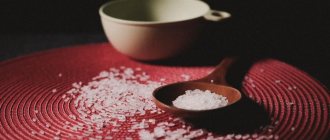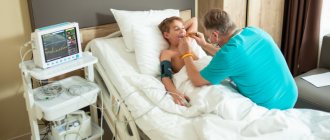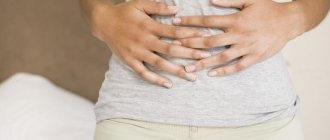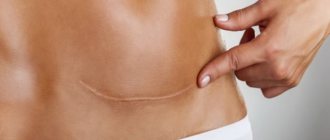How to get rid of fecal stones at home
Fecal stones (coprolites) are dense formations (sometimes very hard) that have formed in the colon during prolonged stagnation of intestinal contents. There can be one stone or many.
Sometimes they reach a diameter of 10-15 cm. The stones may be mixed with mucus and sometimes have a layered structure. The stones may consist solely of magnesium carbonate, or 80% lime carbonate or "fatty-waxy masses" formed from large consumption of very fatty foods that contain refractory fats of animal origin.
Stones can also form from accidentally swallowed berry seeds or animal bones, pills, poorly cooked food and hair. Sometimes large gallstones and urinary stones enter the intestines through fistulas. Fecal stones usually form in old age.
Causes
Most often, intestinal stones form in older people, whose intestinal system is subject to age-related changes. In addition, people with health problems are at risk:
- atony or hypotension of the rectum;
- Parkinson's disease;
- persons who abuse fatty foods.
The main causes of stones are:
- unbalanced diet, abundance of unhealthy foods, fast food, sweets;
- passive lifestyle;
- alcohol abuse and smoking;
- accidentally eaten bones of berries, fish or animals;
- undigested food remains;
- penetration of foreign objects, tablets, hairs into the colon.
It has been proven that coprolites are formed when antacid drugs are used in large doses. Under the influence of bacteria, residual particles undergo rotting for a long time and collect into lumps.
If fecal deposits are not removed in a timely manner, the process may worsen. This will lead to intestinal obstruction, which can only be cured by surgery.
Symptoms
The main symptoms of stone formation are:
- haemorrhoids;
- chronic constipation;
- fatigue and weakness;
- low performance;
- nausea;
- pain and discomfort in the epigastric region;
- bloating and flatulence after eating;
- heaviness in the stomach;
- heartburn;
- headache;
- dysbiosis.
Heavy coating of the intestinal walls with feces contributes to the formation of the so-called plug. This plug blocks the intestinal lumen and disrupts intestinal motility. As a result, unpleasant symptoms and discomfort appear. At the initial stage of the formation of stones in the lumen, a deterioration in the functioning of the gastrointestinal tract is observed, but when the formations become larger, they poison the body from the inside, having a negative effect on other internal organs.
3. Symptoms and diagnosis
A clinical picture that would be highly specific and would indicate the presence of stones in the intestine has not been described. The symptoms are very diverse and difficult to statistically generalize: in some cases there is none at all, in others severe complications bring the patient to the hospital at a relatively early stage of stone formation. The shape, size, quantity, and location of stones also vary widely; they can get stuck in bends and folds, become encapsulated, form wall “protrusions”, etc.
Sometimes for decades a person is not even aware of the presence of such formations, and eventually turns to a gastroenterologist or proctologist with complaints of difficulty in defecation, a feeling of bloating and incomplete emptying - or he persistently self-medicates, taking over-the-counter laxatives for years, “folk remedies for slags”, etc., which only aggravates the situation. In rare cases, stones cause paroxysmal nagging pain in the lower abdomen or, injuring the intestinal walls, cause anal bleeding, colitis, etc. Finally, as they grow, in the event of an unfavorable displacement and/or rotation of the fecal stone, the intestinal lumen may become tightly blocked, and obstructive intestinal obstruction occurs, which creates direct and unambiguous indications for intervention according to the emergency care protocol.
Diagnosis of fecal stones can be quite difficult, since the existing symptoms, as indicated above, are in most cases nonspecific and force one to look, first of all, for tumors, polyps and other causes of difficulty in defecation, which are much more common compared to the frequency of occurrence of stones. In addition, palpation and laboratory examination may also be uninformative and lead to erroneous conclusions. As a rule, it is possible to finally determine the diagnosis only with the use of sigmoidoscopy, colonoscopy and plain radiography (sometimes, with a certain composition and sufficient echogenicity of the stones, an ultrasound examination allows us to establish or at least suspect the cause).
About our clinic Chistye Prudy metro station Medintercom page!
What is the danger?
Fecal stones lead to disruption of intestinal functions and slower intestinal motility.
This pathology leads to the development of the following complications:
- chronic constipation;
- autoimmune diseases;
- allergic reactions;
- general intoxication of the body;
- the appearance of malignant tumors localized in the rectum.
Among the most dangerous complications of fecal stones for the patient, doctors identify internal bleeding and intestinal obstruction.
How to remove coprolite
A proctologist will help you get rid of discomfort in one visit. The procedure is quick and rarely requires pain relief. The doctor works carefully with his finger or auxiliary instruments. Removal steps:
- The patient undresses below the waist and lies sideways on the couch.
- The proctologist generously applies a special lubricant to the anus area.
- The doctor puts on gloves, treats the finger with lubricant and carefully removes parts of the fecal stone. If necessary, he helps himself with a sterile instrument.
- After the procedure, the proctologist will make sure that the rectal mucosa is not damaged, there is no bleeding, and the patient feels well.
- A specialist will advise you on how to avoid relapse. If required, he will refer you to a gastroenterologist and nutritionist.
How to cleanse the intestines of fecal stones?
For small-sized fecal stones, doctors prefer to use conservative treatment methods.
For these purposes, the following therapeutic techniques are used:
- Siphon enemas.
- Taking laxatives (used only periodically to avoid addiction).
- Cleansing enemas that improve intestinal permeability. Microenemas and enemas with decoctions of such medicinal herbs as motherwort, linden blossom, and chamomile have a good effect. It is recommended to do enemas daily for a week, then take a week break and repeat the treatment course again.
Such an effective procedure as hydrocolonoscopy deserves special attention, it promotes the maximum passage of feces from the intestinal walls and allows you to cleanse the intestines. The use of glycerin suppositories has a good effect. This method of treatment is especially recommended in the presence of fecal stones in young patients.
Symptoms of fecal stone contamination
Fecal stones do not affect your well-being - if in small quantities
If the problem has not gone far, and there are not large quantities of stones, this does not affect your well-being. If the number of stones increases, characteristic signs of the disease appear. The pathology manifests itself with a number of characteristic signs:
- Headaches and dizziness
- Reduced immunity, weak resistance to ARVI and other diseases;
- Constipation, including chronic
- Allergic reactions
- An enlarged (“bloated”) abdomen, even in the absence of problems with excess weight
- Weakness, apathy
- Unexplained abdominal pain
Also, additional signs of the presence of fecal stones in the intestines are swelling of the face, increased sweating, cellulite, coating on the tongue and bad breath. If there are two or more symptoms of slagging, we can say that a person has accumulated a significant amount of stones in the body.
Particularly indicative signs of the disease are plaque on the tongue and a bloated stomach (plaque is formed due to increased formation of mold and pathogenic microflora in the body, the stomach is bloated due to fermentation processes in the intestines and the physical accumulation of stones inside).
If the intestines are significantly clogged, a situation arises when the internal organs are compressed by the intestines clogged with stones, so there is no need to talk about any normal functioning of the body. Since coprolites can cause complications in the form of intestinal (obstructive) obstruction or lead to the appearance of neoplasms, this problem cannot be ignored, and you should consult a doctor for diagnosis and treatment. Depending on the severity of the symptoms of the disease, the following diagnostic methods are prescribed:
- Palpation. In this way, only large stones in the rectum can be detected.
- X-ray examination. Makes it possible to determine the location of the seal.
- Colonoscopy. Suitable for cases of rectal stones.
- Echography. Similar to radiography in its application.
In the future, it is possible to prescribe other studies and tests, since formations in the intestines or rectum can be caused not only by the accumulation of fecal stones, but also by polyps or tumors. Based on the results of the examination, inpatient or outpatient treatment is prescribed.
Enemas
You can eliminate feces in the intestines using folk remedies. An enema is one of the accessible and simple ways to remove accumulated toxins yourself.
- Ognev's enema. The cleaning method was invented by the domestic doctor Ognev. To prepare, you will need a glass of hydrogen peroxide 3%, a glass of glycerin, 200 g of soap and ½ glass of dry wine. After douching, the patient remains in a lying position for a quarter of an hour. During the cleansing process, a burning sensation may occur. This method is prohibited for inflammatory processes in the colon, as well as for diseases of the sigmoid and colon.
- An enema based on pumpkin honey provides gentle and gentle cleaning. First, you should cleanse with a regular enema consisting of water. Then prepare a mixture consisting of 300 g of honey and a glass of warm water. The resulting solution is injected into the rectum and left for 30 minutes. The procedure is carried out over 5-7 days. This method can painlessly remove seals, as well as cure some skin pathologies and papillomas.
- Cleaning based on olive and sea buckthorn oils, as well as using Vaseline, vegetable or hemp oils. Oils are used separately, not in combination with each other. The procedure will require about 100 g of the ingredient, warmed to room temperature. This enema has an enveloping effect on stones, facilitates their easy removal, and does not have an irritating effect on the intestines. The patient must remain in a lying position for 30 minutes.
How to get rid of stones in the intestines
Fecal stones
The presence of coprolites requires mandatory treatment, since even a not too severe course of the disease is accompanied by poisoning of the body with stagnation products, atony, and decreased tone. In the future, your health may deteriorate. In advanced cases, fecal stones can cause intestinal obstruction, or give rise to the development of tumors and polyps.
Treatment is prescribed by the doctor based on the results of the examination, depending on the size of the stones, their location, and the patient’s concomitant diseases. Inpatient treatment, including laxatives and siphon enemas, is usually recommended. Such methods are used for stones in the colon.
If the stone or stones are localized in the rectum, they can be removed surgically. Surgery is necessary in case of intestinal obstruction to avoid possible death. Polyps and other neoplasms are also removed, especially if they are not single. After inpatient treatment, and especially after surgery, it is necessary to regularly carry out additional re-examinations and examinations.
If the disease is mild, it is possible to undergo treatment at home. You should use the products prescribed by your doctor, but you can cleanse the intestines using proven methods of gentle cleansing:
Siphon enema
This type of enema involves the use of a large amount of liquid at a relatively fast pace for emergency lavage of the colon according to the following indications:
- Ineffectiveness of a standard enema.
- Intestinal obstruction.
- Emergency removal of toxins.
Technique:
Water is poured in 1 - 2 liters at a time; you will need a ladle of the appropriate size. A glass mug requires no less volume. The patient takes the desired position (for example, on the right side with his knees tucked), the doctor inserts a tip lubricated with Vaseline to a sufficient depth. The literature gives a value of 30-40 cm; it is necessary to take into account the anatomical features of the person for obvious reasons.
Excluding the ingress of air, the volume of the ladle is pumped into the colon. Then the mug is lowered, the contents need to be poured into a collection container. The procedure is repeated 10-12 times. The number of repetitions should be maintained, even if the wash water is clean. For the most part, the procedure eliminates constipation.
Folk remedies
Traditional medicine, more than ever, has its own approach to getting rid of fecal stones at home.
- Castor oil . To prepare a cleanser, you should take castor oil at the rate of 1 gram per 1 kilogram of human weight. Heat the oil using steam. Squeeze lemon juice in an amount of 2 parts juice to 1 part oil. Quickly drink warm oil and wash it down with lemon juice. Do not eat or drink anything for 12 hours after taking the medicine. It is better to carry out the procedure at night; in case of severe nausea, you can chew a little raisins. Cleansing begins after 2 hours, and removal of toxins after 12 hours.
- Vodka with oil . Combine 40 milliliters of unrefined sunflower oil and 20-40 milliliters of vodka in a tightly closed container. Close the container tightly and shake by shaking for 5 minutes. Open and drink everything as quickly as possible. This mixture should be drunk 3 times a day 30 minutes before meals. Try to alternate applications at equal intervals. Use the mixture for medicinal purposes for 10 days in a row. Take a break for 5 days and repeat the oil-vodka course again. After the third course, take a break for 2 weeks. If necessary, repeat this treatment circle for up to 2-3 years.
- Oatmeal and rice porridge . Take equal amounts of rice and oats. Boil both cereals in salted water. You need to eat this porridge in the morning and evening for a week. This medicinal porridge removes the remains of undigested food, fecal stones, heals cracks in the intestinal mucosa, perfectly cleanses this organ, and increases its tone.
- Glycerin suppositories . You can cope with coprolites without an enema by using glycerin suppositories. These are rectal suppositories, thanks to which you can delicately cleanse the intestines of stones. They soften stones, eliminate painful bowel movements, and improve intestinal function. The use of glycerin suppositories is contraindicated for anal fissures and exacerbation of hemorrhoids.
- Prune infusion . Wash 100 g of prunes, pour 0.5 liters of boiling water over them, let it brew. Drink a glass of infusion 3 times a day. Prunes perfectly cleanse the intestines, fight constipation, remove discomfort in the stomach, and normalize metabolism.
The main complication of fecal stones is the occurrence of intestinal obstruction (partial or complete).
Treatment options
If coprolites or fecal stones are detected, measures must be taken to remove them from the intestines. They not only cause poisoning of the body, but can also cause human death. If, after their detection, appropriate measures are not taken, the person’s health condition will deteriorate. After carrying out all the necessary diagnostic measures, the doctor will prescribe treatment.
Therapeutic tactics depend on the location of the stones and their size, and concomitant diseases. With this diagnosis, the patient is usually hospitalized in a hospital. When stones are localized in the large intestine, treatment is prescribed with siphon enemas and laxatives.
If coprolites are fixed in the rectum, then they can only be removed surgically. The same method of treatment is used for intestinal obstruction, since this condition is fraught with death. For mild forms of the disease, treatment can be carried out at home.
Colon cleansing foods
For this purpose, mild intestinal cleansing agents are prescribed:
- Laxatives. They cannot be abused, as they are addictive, but their use is allowed when necessary. Glycerin suppositories and castor oil, 1 tbsp each, are recommended. spoon.
- Enemas. Despite the fact that with their help it is impossible to cleanse the entire intestine, this method should not be neglected, since with their help the intestinal permeability improves. The drug presented in the form of a microenema – Enimax – has proven itself positively. Enemas with medicinal herbal decoctions are effective. A composition of chamomile, motherwort and linden is suitable for this.
- Hydrocolonoscopy. It is highly effective, but is carried out only in a medical institution. Afterwards it is necessary to take medications to restore normal intestinal microflora.
During the treatment period, it is recommended to eat plant foods. You need to drink freshly squeezed juices, eat raw vegetables and fruits. Instead of regular sweets, it is better to switch to dried fruits. Traditional medicine also offers effective means for removing fecal stones. One of them is butter with apples. You need to drink a tablespoon of vegetable oil on an empty stomach and then eat only apples throughout the day - one every 2 hours.
You cannot eat any other food on this day; warm water is allowed to drink. This method replaces an enema.
Castor oil with lemon is also effective in the fight against fecal stones. The oil is preheated, the dose is calculated at 1 g of oil per kilogram of weight. Lemon juice needs half the volume of oil. The ingredients are not mixed and drunk one at a time in the morning, starting with the oil. After this, you are prohibited from eating or drinking anything for 10 hours.
Treatment includes laxatives and enemas
Medicinal colon cleansing
Cleansing the intestines from fecal stones using medications can be done in any specialized medical institution where it is possible to carry out this procedure in a hospital setting under the supervision of a competent doctor. For this purpose, ordinary boiled water is used, introduced into the anus through an enema.
It should be noted that doctors resort to this procedure only in the most extreme cases, when the problem that has arisen has to be solved against the background of intoxication of the body. It is also necessary to take into account the fact that enemas wash out beneficial microorganisms from the intestinal microflora along with toxins, which carry the function of processing and assimilation of food.
Even if instead of boiled water, decoctions of medicinal plants or boiled oil are used. This method is not suitable for people who have undergone intestinal surgery or suffer from bleeding of internal organs or hemorrhoids. After the intestines are washed, you should think about restoring its microflora, for which it is recommended to take drugs such as Bifidumbacterin or Linex.
The most gentle method of intestinal cleansing is the use of laxatives, which are produced today in a wide variety in the form of suspensions, mixtures, suppositories, and tablets. The principle of action of all laxatives is based on enveloping the intestinal walls with a film that prevents the absorption of fluid. The result of this process is spontaneous liquefaction of stool, followed by its removal from the body, 6-7 hours after taking the laxative.
However, we should not forget that medications with a laxative effect contribute to the leaching of potassium from the body, which is necessary for the full functioning of the heart muscle. This should be kept in mind by persons suffering from cardiovascular insufficiency, and bowel cleansing should be carried out in this way only if there is no other way to get rid of constipation and restore full bowel function.
1.General information
When applied to the human body, the word “stones” (calculi) means dense deposits in hollow organs or on hard surfaces, such as tooth enamel, which are formed as “sedimentary rock” and are a complex composite of various salts. Depending on where exactly calculus formation (the process of stone formation) starts, these can be salts of uric, oxalic, phosphoric, carbonic and other acids. The most common locations are the kidneys, urinary and gallbladder, corresponding ducts, and intestines.
Fecal stones, as the name implies, form in the large intestine, along the path of removing digestive waste from the body. Their composition and mechanism of formation are somewhat different from the composition and etiopathogenesis of, say, bladder stones, but problems can arise no less serious, including intestinal obstruction.
There are practically no statistical data on the prevalence of this phenomenon; Available sources only agree that the probability of colonic stone formation is in direct correlation with age, i.e. As we grow up and age, tissue wear and tear and the accumulation of various types of pathological changes, more and more favorable conditions are created for the formation of fecal stones.
A must read! Help with treatment and hospitalization!
Prevention
Having been freed from coprolites and accompanying symptoms, a person should feel better and the functioning of internal organs should improve. From now on, it is necessary to adhere to certain rules in order to avoid the recurrence of the disease. Preventive measures look like this:
- limiting the consumption of fatty, spicy, salty foods that cause constipation;
- drinking at least 2 liters of liquid per day (boiled water, juices, green tea, compotes);
- rejection of bad habits;
- maintaining an active lifestyle, performing moderate physical activity;
- regulation of nutrition - adherence to the regime and measures in food;
- including more fresh fruits and vegetables in the diet;
- tracking bowel regularity.
If you experience intestinal bleeding or prolonged constipation, you should consult a doctor.
Prevention of coprostasis
It is important to cure concomitant proctological diseases. Women should visit an endocrinologist. To improve bowel movements and maintain intestinal flora, you need to follow the advice of a gastroenterologist. In some cases, doctors prescribe laxatives, cleansing enemas, and therapeutic massage.
It is necessary to reconsider your lifestyle. Walk more, quit bad habits, drink a lot of clean water. Meals should be frequent, small portions. It is necessary to introduce cereals, vegetables, and fermented milk products into the diet. If you have other chronic diseases, you should discuss the diet with your doctor.
Experienced proctologists and gastroenterologists will provide medical assistance to you. The specialist will carefully remove the coprolite, find out the reasons for its formation and draw up a plan for restoring intestinal function to prevent constipation and relapses of coprostasis.











